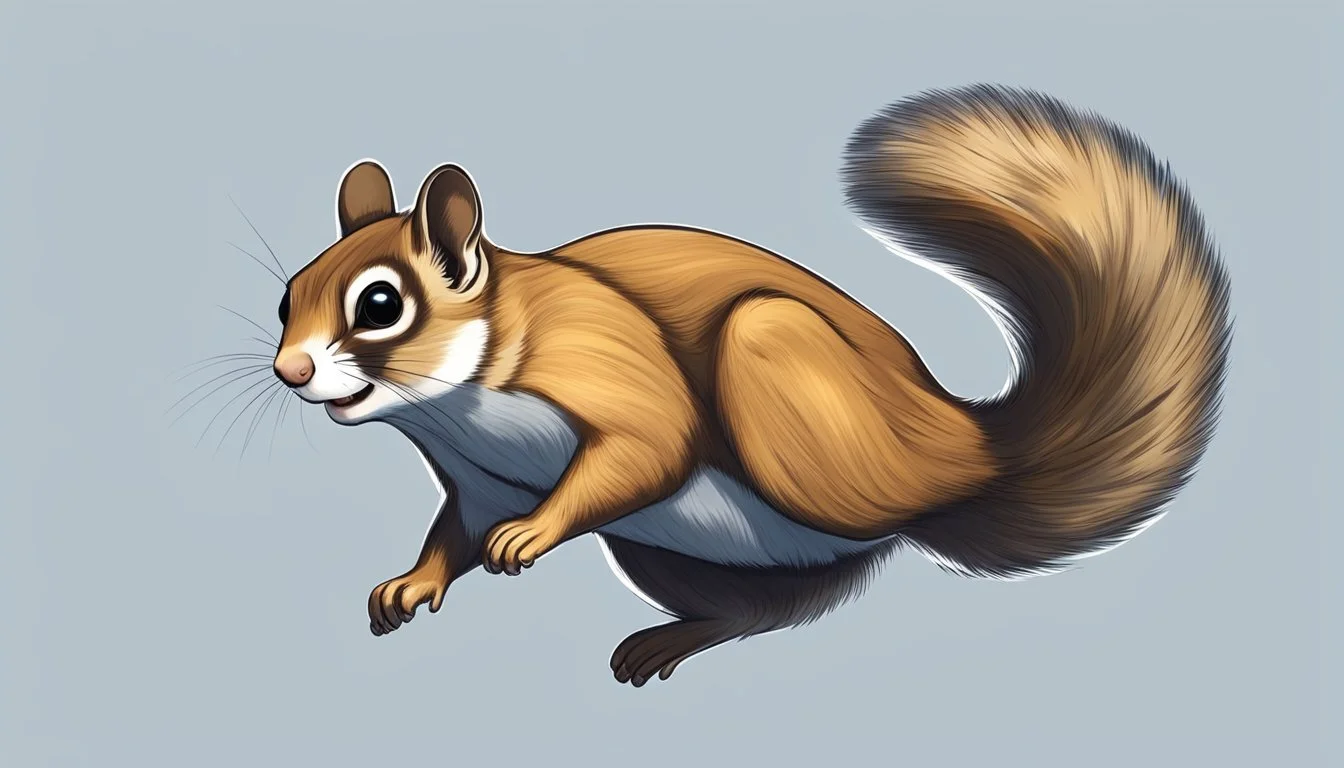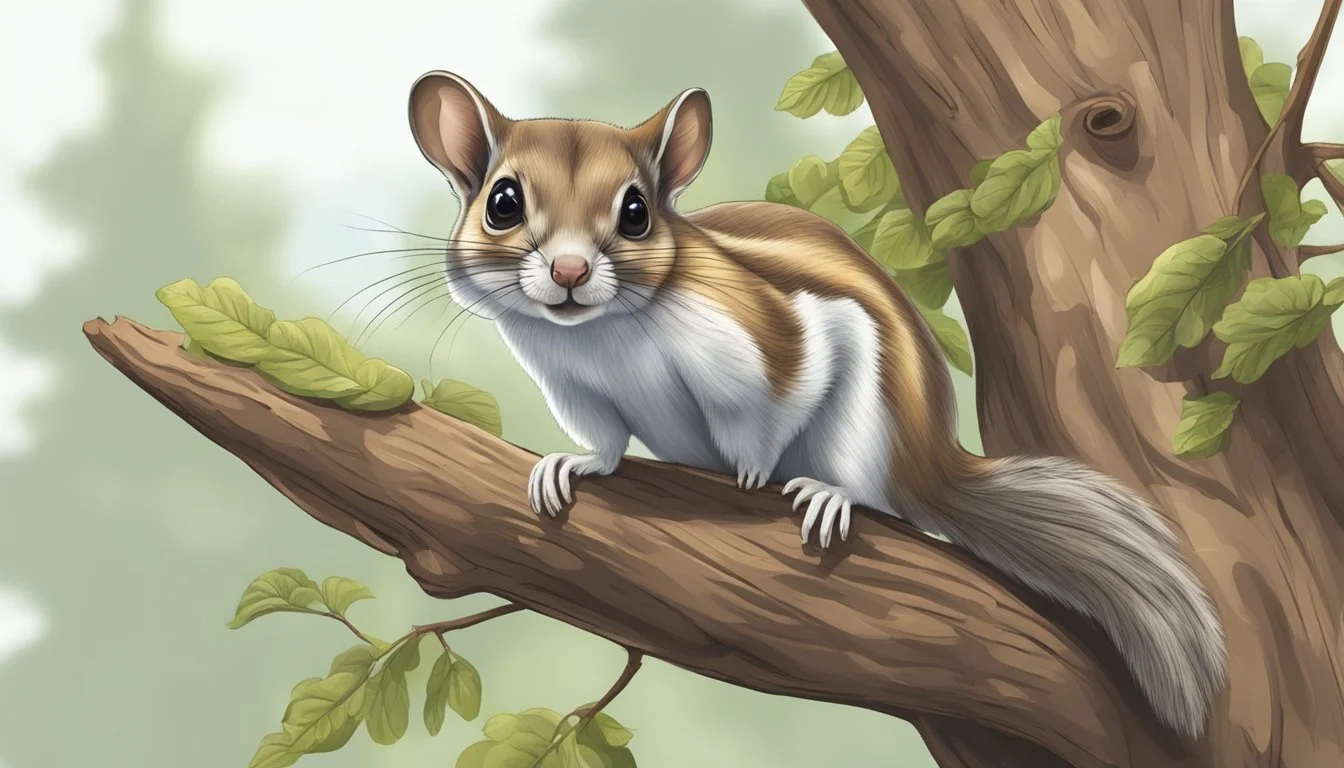Flying Squirrel Hunting for Beginners
Essential Tips and Strategies
Hunting flying squirrels presents a unique challenge for beginners due to the nocturnal and arboreal nature of the target. Unlike other squirrels, flying squirrels glide between trees using a membrane called a patagium, making them elusive and harder to spot for those unaccustomed to their habits. As small and nimble creatures, they require patience and precision from the hunter.
For those new to hunting, pursuing flying squirrels can serve as an excellent way to develop important hunting skills such as spotting, stalking, and shooting accuracy. It's a pursuit that also requires understanding the behavior and preferred habitat of flying squirrels which includes dense woodland areas with mature trees. These environments provide the canopy cover and vertical space flying squirrels use to thrive and glide.
Getting started requires selecting the right equipment, from a suitable firearm or airgun calibrated for small game to the proper safety gear and attire for a night in the forest. For the novice hunter, familiarization with the legal hunting hours, regulations, and the specific seasons for flying squirrels is also crucial, as these may differ significantly from other small game hunting regulations.
Understanding Squirrel Species
When exploring the diverse world of squirrel hunting, it's critical to distinguish between different species, particularly flying squirrels, and understand their unique traits and habits.
Flying Squirrel Basics
Flying squirrels are a fascinating family of squirrels known for their ability to glide between trees. They possess a patagium, a membrane stretching from wrist to ankle, which allows them to navigate aerially. Unlike other squirrel species, they are nocturnal, which means hunters must adapt to these nighttime habits.
Habitat and Distribution
The habitat of flying squirrels is typically dense woodlands with an abundance of trees. They are found across various parts of North America, with the southern flying squirrel (Glaucomys volans) occupying the eastern United States and the northern flying squirrel (Glaucomys sabrinus) found in the northeast, along the west coast, and into Canada. Understanding the distribution of these squirrels is crucial for locating their presence.
Diet and Behavior
Flying squirrels have a varied diet consisting of fruits, nuts (how long do nuts last?), fungi, insects, and occasionally bird eggs. Their behavior is characterized by their nocturnal and gliding activities, and they are known to be less wary than daytime-active squirrel species, such as gray squirrels (Sciurus carolinensis) and red squirrels (Tamiasciurus hudsonicus). Observing their feeding and nesting areas can provide valuable insights for a successful hunt.
Legal and Ethical Considerations
When beginning the journey of squirrel hunting, one must be well-informed about the legal framework governing the activity and the ethical implications of their actions. Adherence to hunting laws and acquisition of proper licenses are imperative, as is an understanding of the ethics of wildlife conservation.
Hunting Laws and Regulations
Hunting laws vary significantly by state and region. It is crucial that hunters check the specific regulations of their area before setting out. Generally, these regulations will detail the hunting season dates during which it is legal to hunt squirrels, outline bag limits on how many squirrels may be taken, and specify which types of firearms or air rifles are permitted.
Hunting Season: States set individual seasons for squirrel hunting, often spanning multiple months.
Bag Limits: These limits are created to prevent overharvesting and ensure population stability.
Hunting License Requirements
Before hunting squirrels or any other wildlife, individuals must obtain a hunting license. Licensing ensures that hunters have basic wildlife management, conservation, and safety knowledge.
License Acquisition: Usually involves passing a hunter education course and paying a fee.
Legal Requirements: Licenses must be valid and adhered to according to state regulations.
Conservation and Ethics
Conservation of wildlife is a fundamental aspect of hunting ethics. Hunters should practice humane hunting techniques and strive to minimize suffering. Additionally, one should consider the ecological impact of hunting on squirrel populations and habitats.
Conservation: Involves sustainable hunting practices and compliance with conservation laws.
Ethical Hunting: Ethics require respect for life and consideration of the animal's role in the ecosystem.
Preparation for the Hunt
Successful squirrel hunting begins with thorough preparation. Choosing correct equipment, dressing appropriately, and refining spotting and tracking skills are crucial for a beginner.
Choosing the Right Equipment
The novice hunter's armory should include several key items. A .22 caliber rifle or air rifle is preferred for its accuracy and minimal damage to the quarry. Alternatively, a bow may be used for a more challenging experience. Hunters should also carry a sharp knife or hunting knives for processing their catch.
Weapons
.22 caliber rifle
Air rifle
Bow
Tools
Hunting knives
Hunting Gear and Clothing
Proper gear is integral to the hunter's success and safety. Camouflage clothing blends the hunter with the environment, while durable hunting boots protect and provide stability during the trek.
Clothing: Ensure it matches the surrounding environment.
Boots: Invest in waterproof and comfortable hunting boots.
Spotting and Tracking Techniques
Understanding squirrel behavior and habitat enhances the chance of a successful hunt. One should become adept at identifying squirrel tracks and foraging signs. Utilizing binoculars helps in spotting squirrels from a distance without startling them.
Binoculars: Essential for locating squirrels before they detect you.
Tracking: Look for fresh tracks, chewed nuts, and nesting areas.
Preparation is as vital as the hunt itself and should not be underestimated by beginners. With the right equipment, clothing, and techniques, a hunter enhances their prospects for a successful squirrel hunt.
Locating and Stalking Prey
When hunting flying squirrels, success hinges on the ability to detect the subtle signs of their presence and strategically approach them without being noticed. A hunter's patience and stealth are crucial in the forest where even the slightest disturbance can alert the prey.
Identifying Signs of Squirrel Activity
In forests, flying squirrels often nest in tree cavities or build nests from twigs and leaves. Hunters should look for nests high in the tree branches, which often appear as large clumps of leaves and twigs. Other indicators include tracks on the ground and around the base of trees, as well as the sounds of their movements or feeding in the canopy. Scratches on tree bark, droppings, and remnants of seeds, acorns, or hickory nuts may also signal squirrel activity.
Mastering Stealth and Patience
One must move quietly through the forest, taking care to avoid stepping on twigs or rustling leaves. Patience is key; hunters should move in short intervals, perhaps 10 to 12 steps at a time, pausing to observe and listen. Effective stalking means blending into the surroundings, often remaining motionless for extended periods to avoid detection, allowing squirrels to continue their activities undisturbed.
Using Calls and Bait
Calls can mimic the sounds of squirrels or their predators, prompting them to reveal their location. The use of bait, such as bird feed, seeds, or nuts, can also attract flying squirrels. Placing bait in known squirrel areas can draw them out into the open, providing opportunities to observe and eventually stalk. Hunters can use a simple setup:
Bait Station Setup:
Material Quantity Placement Bird feed Varied Open, visible areas Seeds Handfuls Near the base of trees Acorns/Hickory nuts Scattered Around known activity sites
By combining these techniques, hunters can increase their chances of locating and stalking flying squirrels effectively.
Effective Hunting Techniques
The pursuit of flying squirrels through hunting necessitates a blend of patience, precision, and strategy. Different techniques cater to various environments and hunter preferences, ranging from active pursuits to patient observation.
Spot-and-Stalk Hunting
Spot-and-stalk hunting requires a hunter to first locate flying squirrels by identifying their presence through sight or sound. Once found, the hunter slowly advances towards the animal, maintaining silence and using cover to remain undetected. This method is highly active and demands a significant understanding of the squirrel's behavior.
Start by locating areas rich in food sources like acorns or bird feeders.
Use binoculars to identify your quarry from a distance to avoid spooking them.
Stalk with deliberation, pausing frequently to assess the squirrel's alertness.
Ambush and Still-Hunting
Ambush and still-hunting are more passive techniques, relying on waiting in a likely area where a squirrel will appear. This approach suits hunters who prefer minimal movement and waiting for the game to come to them.
Select an area with signs of squirrel activity, such as chewed nutshells.
Station yourself near feeding sites during dawn or dusk when squirrels are most active.
Remain motionless and silent, blending into the environment for the best chance of success.
Hunting with Assistance
Hunting flying squirrels with assistance refers to using trained dogs or hunting partners to increase the efficiency of the hunt. Dogs can be especially useful as they can detect squirrels by scent and sound, often flushing them from their hiding places.
Train dogs to understand the specific quarry scent and act accordingly without harming the game.
Coordinate with partners to cover more ground and employ a variety of tactics, such as one person moving to flush squirrels towards another.
Communicate effectively and quietly to ensure safety and strategic hunting.
After the Hunt
Following a successful hunt, the hunter needs to focus on the proper handling and preparation of the squirrel meat, safe cooking practices, and the importance of hunting safety and first aid.
Handling and Processing
Once the hunter has successfully harvested a squirrel, they must process the animal humanely and efficiently. The first step is to ensure the squirrel is dispatched humanely. If the animal is not yet deceased, a lethal method should be applied to prevent unnecessary suffering. After confirming the squirrel is no longer living, the hunter should begin field dressing. This involves:
Removing the hide: Making a cut from the hind legs towards the belly and peeling back the skin.
Eviscerating: Removing the internal organs carefully to avoid contaminating the meat.
Proper field dressing reduces the risk of spoiling and maintains the quality of the meat.
Cooking Squirrel Meat
Squirrel meat is a viable food source and should be cooked thoroughly to ensure safety. It is versatile and can be prepared in various ways such as stewing, frying, or baking. Here are key tips for cooking squirrel meat:
Safety: Always cook squirrel meat to an internal temperature of 160°F to eliminate the risk of foodborne illnesses.
Methods: Suggested cooking methods include:
Stewing: Cook the squirrel in a broth with vegetables.
Frying: Bread and fry the pieces until golden brown.
Baking: Season and bake in an oven for a healthier option.
Experimenting with recipes allows the hunter to enjoy the fruits of their labor in a multitude of delicious dishes.
Hunting Safety and First Aid
Hunting requires one to always prioritize safety and be prepared for emergencies. Hunters should:
Carry a first aid kit equipped for cuts, sprains, and other common injuries.
Know basic first aid procedures, such as how to clean and dress a wound.
Be aware of their surroundings to avoid accidents, including falls or unintended firearm discharge.
By being prepared and informed, hunters can ensure that their experience remains safe and enjoyable.
Additional Considerations
Before embarking on a flying squirrel hunting excursion, beginners should pay attention to key factors such as the varied environments you may encounter, understanding and adapting to the squirrels' behavior, and respecting legal boundaries concerning private and public areas.
Hunting in Different Environments
Urban Areas: In urban settings, hunters must remember that flying squirrels often reside near human dwellings. The creatures may nest in structures like attics or take advantage of resources like bird feeders.
Natural Habitats: For those hunting in more natural environments, understanding the habitat is crucial. Southern flying squirrels, for instance, are often found near water sources and prefer mixed forests with nut-bearing trees.
Adapting to Squirrel Behavior
Hunters should consider the behavior patterns specific to flying squirrels. These animals are nocturnal; hence, hunting efforts may be more successful after dusk. Additionally, they have seasonal activity peaks, with autumn being a particularly active time of year as they gather food.
Identifying signs of presence:
Chewed bark or nutshells near the base of trees.
Noises from frequented areas such as sheds or outbuildings.
Respecting Private Property and Public Areas
Private Property: Hunters must secure permissions from landowners before hunting on their land. It's important to understand the boundaries and not assume that unmarked areas are open for hunting.
Public Property: While public lands offer more accessibility, they come with regulations that must be adhered to. These rules might involve specific hunting seasons and limitations on the number of animals that can be harvested.
Advancing Your Skills
After gaining a foundation in squirrel hunting, enthusiasts can refine their approach to become more adept at tracking, anticipating squirrel behavior, and making accurate shots. Mastery involves more than just time in the field; it entails a deliberate effort to augment one's capabilities and understand the subtleties of the sport.
Tips for Seasoned Hunters
Seasoned hunters elevate their proficiency by observing squirrel habits more intently, particularly during feeding and foraging times when squirrels exhibit peak agility. They assess patterns, such as how weather influences activity and the types of foliage squirrels favor for food sources. Incorporating calls and learning to mimic squirrel noises can also be effective. Taking shots from varying angles and distances under different environmental conditions sharpens their hunting skills.
Practice Stealth: Move slowly and blend into surroundings to avoid detection.
Strategic Positioning: Locate areas with ample food sources, and wait for squirrels to appear.
Timing: Familiarize with the best times for squirrel activity, usually early morning and late afternoon.
Extending to Other Small Game
Diversification into hunting other small game animals like rabbits or quail (What wine goes well with quail?) can help hunters stay versatile and adapt to different hunting conditions. Hunters often use the off-season from squirrel hunting, such as deer season, to pursue these opportunities. These activities help maintain sharp shooting skills and expand one's understanding of different wildlife habitats and behaviors.
Explore New Territories: Research habitats and seek areas known for the small game, ensuring legal permission to do so.
Adapt Tactics: Use techniques acquired from squirrel hunting and adjust them to suit other small game species.
Joining Hunting Communities
Networking with other hunters through communities or clubs opens doors to collective knowledge-sharing and camaraderie. Mentoring or partnering up with fellow hunters can provide invaluable insights. It also invites opportunities to engage in family-friendly events, making hunting a bonding experience for friends and family.
Attend Meetings: Be active in local hunting clubs and attend events.
Participate in Hunts: Join organized group hunts to learn from more experienced hunters.
Educational Workshops: Enroll in workshops or seminars that focus on advanced hunting techniques.






